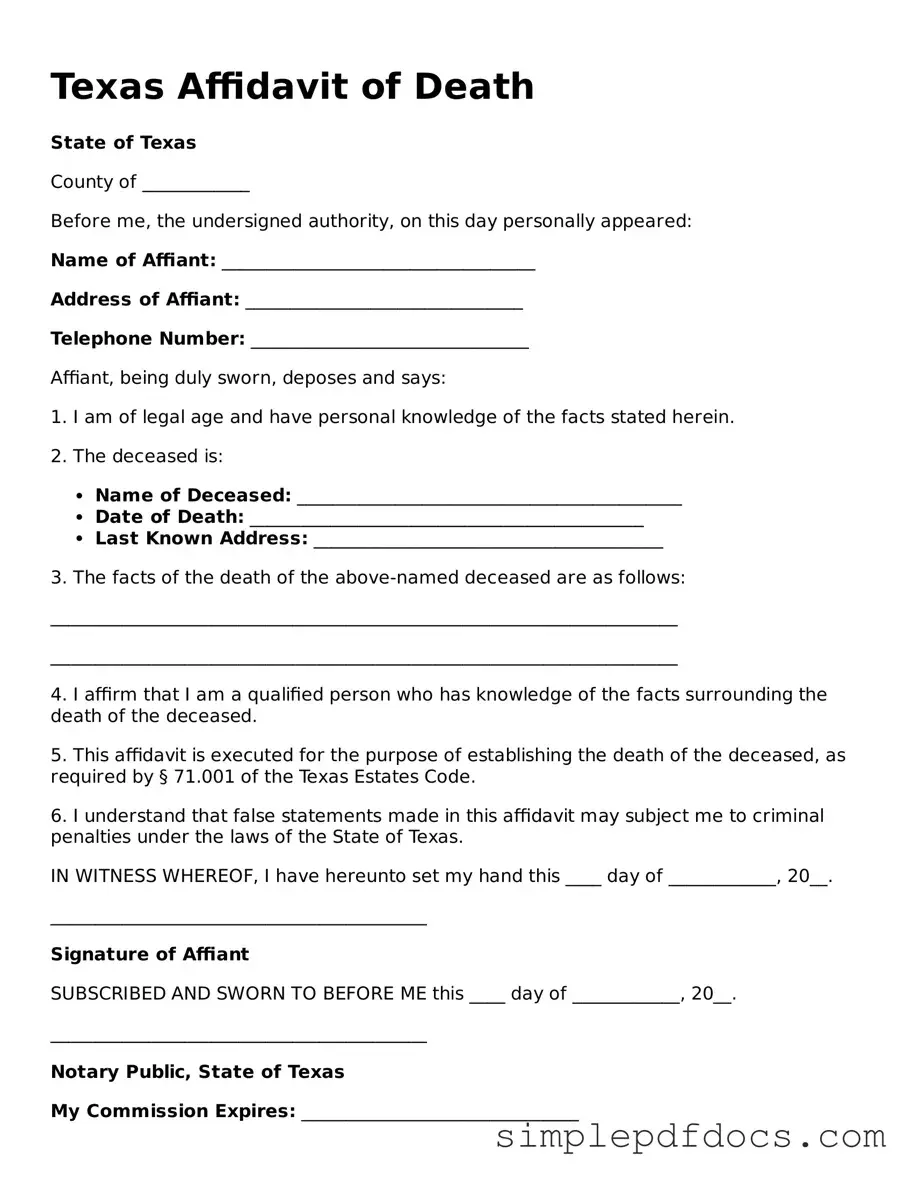Legal Affidavit of Death Document for the State of Texas
The Texas Affidavit of Death form is a legal document used to officially declare that an individual has passed away. This form serves as a vital tool for settling estates, transferring property, and addressing other legal matters following a death. Understanding its purpose and proper usage can help streamline the process during a difficult time.
Get Document Here
